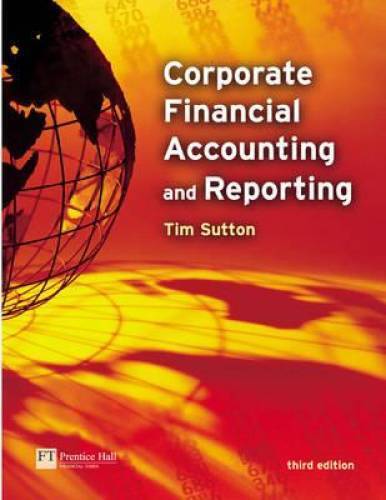Consolidation: fair value adjustments and restructuring provision At start year 5, Hardcastle pays 80 in cash to
Question:
Consolidation: fair value adjustments and restructuring provision At start year 5, Hardcastle pays 80 in cash to acquire 100% of Marlow’s shares. The balance sheets of the two companies at end year 4 are set out below. (Amounts are in A million.)
Hardcastle Marlow Fixed assets Property, plant and equipment 184 142 Investments 76 83 260 225 Current assets Inventories 72 29 Receivables 135 75 Cash and marketable securities 158 41 365 145 Total assets 625 370 Shareholders’ equity 327 70 Debt 139 163 Provisions and other long-term liabilities 68 75 Accounts payable and accrued expenses 91 62 298 300 Total equities 625 370 Hardcastle prepares consolidated accounts at start-year 5. It uses the purchase method to account for the acquisition and makes the following fair value adjustments to Marlow’s accounts. (Amounts are in A million.)
Equipment: downward revaluation −20 Investments: upward revaluation +30 Inventories: reduction due to larger provision for slow-moving items −3 Receivables: reduction due to increase in allowance for doubtful accounts −5 Hardcastle plans to restructure the Marlow business and wants to include a restructuring provision of 12 with the fair value adjustments at the time of the initial consolidation.
Required
(a) Prepare an initial consolidated balance sheet for the Hardcastle Group at start-year 5. Include the restructuring provision in the fair value adjustments.
(b) Hardcastle and Marlow report year 5 income of 39 and 14, respectively. The fair value adjustment to equipment is depreciated over the assets’ remaining life of 5 years. No further value adjustments are made to Marlow’s investments in year 5. The adjustments to inventories and receivables are ‘amortised’ through COGS and bad debt expense in year 5. Goodwill is subject to an annual impairment test: no impairment is recorded in year 5. Compute the year 5 consolidated income of the Hardcastle Group. Ignore income taxes.
(c) The auditors disagree with Hardcastle’s treatment of the restructuring provision. They note that there was no detailed formal plan for restructuring Marlow at the time of acquisition. They require Hardcastle to record the provision as an additional cost in Marlow’s year 5 accounts and not include it with the fair value adjustments in the initial consolidation. How does this change in treatment affect (i) the initial consolidated balance sheet at start-year 5; and (ii) the calculation of consolidated income for year 5?
Check figure:
(a) Goodwill 20 AppenedixLO1
Step by Step Answer:






